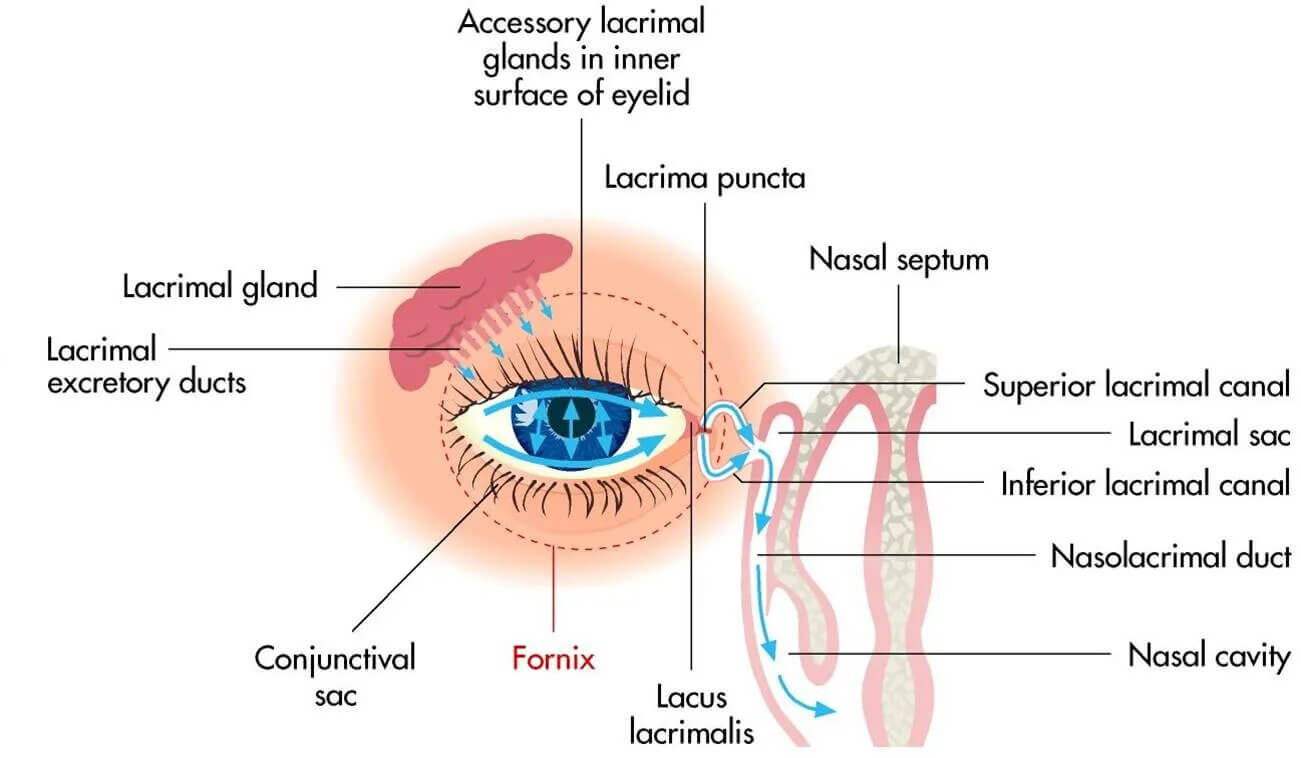


While we used to believe these were three distinct layers, they are probably entwined in some ways with no clear borders. All three layers are important in their own right.
The tears coat the eye every time we blink. The orbicularis oculi muscle around the eye contracts and squeezes oil out of the meibomian glands while the aqueous is secreted out of the lacrimal glands. The mucin is constantly being secreted by the goblet cells. A full blink is necessary to make sure the oil comes out of the meibomian glands on the lower lids. It doesn’t take much pressure, just 0.6 PSI, but the muscle does need to contract around the oil glands or it won’t come out.

Half of the tear film coats the cornea and conjunctiva, while the other half sits in the cul-de-sac in the inferior conjunctival fornix. Tears usually either evaporate or drain through two small nasal holes in the eyelids (puncta) and drain down into the nose and back of the throat. That's why when you cry, you get a runny nose. If the tear film on the cornea evaporates before another blink can come to the rescue, then the fluid in the fornix is sucked up and used to replenish the tear film on the cornea, since that takes precedence. Hopefully, this buys a few more seconds until another full blink can replenish both the fluid on the cornea as well as the fornix. Then the process starts anew.
As you see, the process has a lot of moving parts and that means there are multiple areas where things can go wrong. ; Let's explore this in the next section.